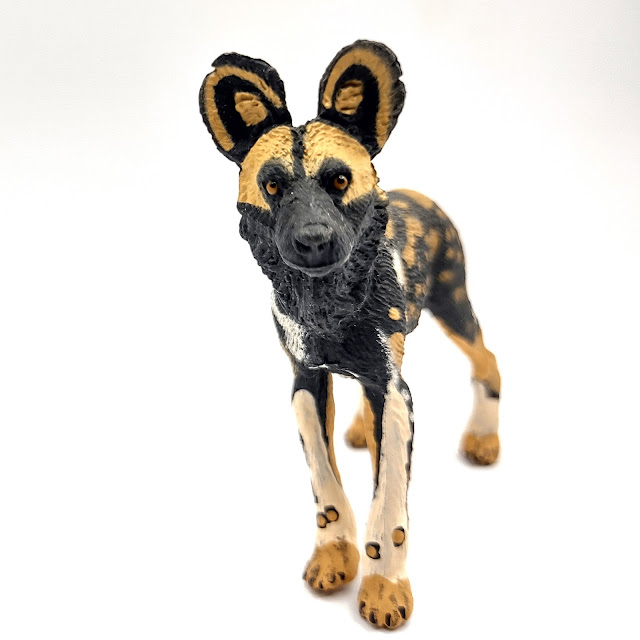The African Wild Dog (Lycaon pictus), also called the Cape Hunting Dog, is the largest wild canid in Africa and the only surviving member of its genus. Its scientific name, which translates to Painted Wolf, refers to the extremely variable coloration of the fur, which is typically a mixture of yellow, brown and black markings, with a few white patches, that vary between individuals and populations. They have large ears which help them keep cool and offer acute hearing; a useful asset when hunting.
Like all wild dogs, they are pack animals, living in large social groups of up to 20 individuals, with a strong hiearchy system for both males and females.
They hunt in an organised co-operative manner, and when prey is targeted, some of the dogs run close to the animal, while others follow behind, taking over when leades tire. They usually prey on medium sized herbivores like antelope, but will also hunt larger beasts such as zebra, wildebeast and ostrich.
Only the dominant male and female breed to produce offspring and the raising of the pups is undertaken by the entire pack. Females give birth after a gestation period of 69-72 days to a litter of up to 19 pups, although 8-10 is most common.
- They can maintain speeds of up to 60 km per hour chasing prey.
- African Wild Dogs are neither domestic dogs gone wild, nor wolves. Although they resemble hyenas, they are in a genus of their own.

Comments
Post a Comment